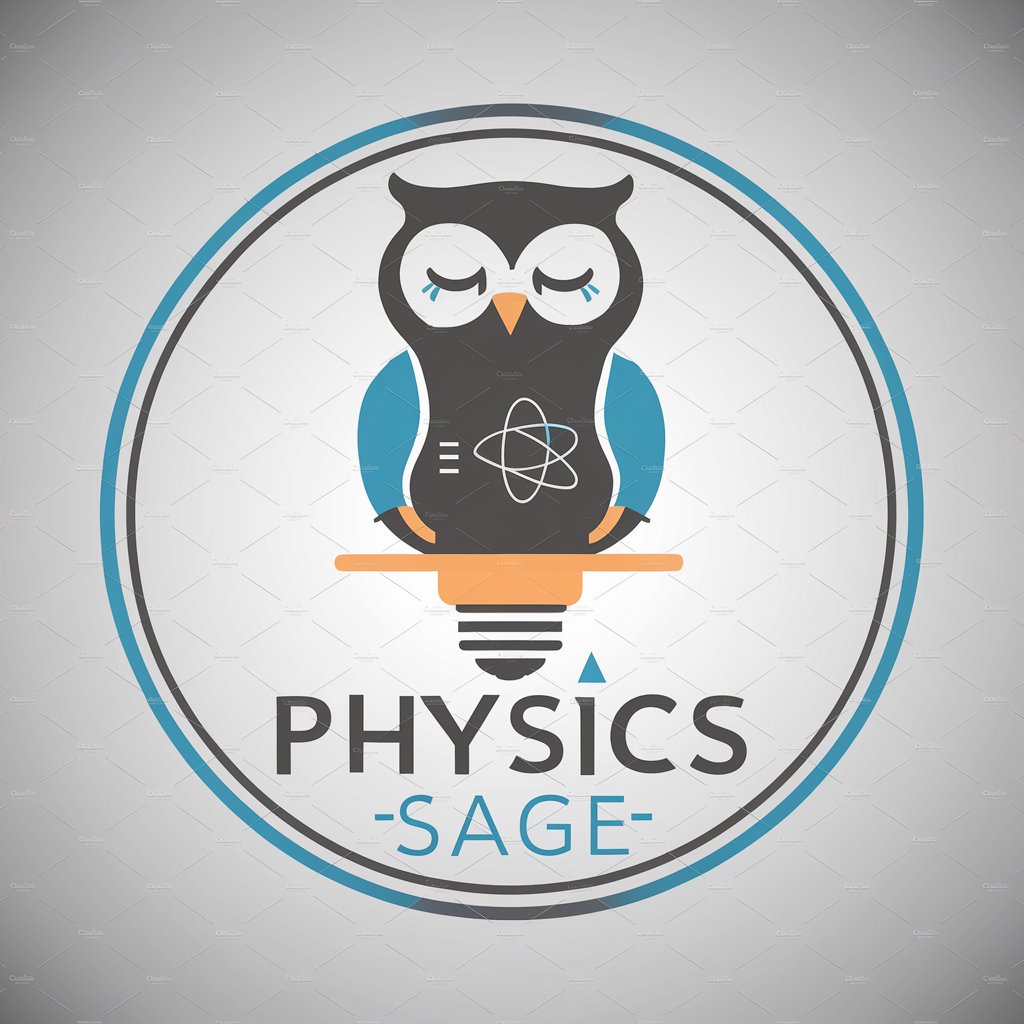Physics Solver - physics problem-solving tool

Ready to delve into physics questions!
AI-powered solutions for physics problems
Explain how Newton's laws apply in this scenario.
Calculate the force needed for this object.
Describe the principles of thermodynamics here.
Solve this kinematics problem step-by-step.
Get Embed Code
Introduction to Physics Solver
Physics Solver is a specialized tool designed to provide comprehensive, step-by-step solutions and explanations to a wide array of physics-related problems. Built on a foundation of advanced computational capabilities, it excels at solving complex physics equations, guiding users through intricate concepts, and addressing gaps in problem statements by making reasonable assumptions based on standard physics principles. Its primary purpose is to aid in the understanding and application of physics concepts across both academic and practical settings. Physics Solver is particularly adept at explaining concepts in a way that fosters deeper learning and retention by breaking down difficult topics into manageable parts. For example, if a user presents an incomplete question about projectile motion, Physics Solver will determine missing variables, such as initial velocity or launch angle, by making reasonable assumptions and then offering a detailed solution. This approach can be crucial for students trying to grasp key concepts or professionals applying physics in engineering contexts. Powered by ChatGPT-4o。

Main Functions of Physics Solver
Detailed Step-by-Step Explanations
Example
A user asks for help calculating the velocity of a falling object under gravity, with air resistance considered. Physics Solver not only calculates the velocity but also explains the step-by-step process, including how terminal velocity is derived and the factors influencing the final outcome.
Scenario
This function is useful for students working through physics homework, who need detailed guidance on solving complex problems. It is also valuable for educators seeking a tool to supplement explanations in the classroom.
Gap-Filling Assumptions
Example
A student provides a problem involving circular motion but does not specify the radius of the path. Physics Solver identifies this missing variable and makes reasonable assumptions based on standard conditions (e.g., assuming uniform circular motion) to proceed with the solution.
Scenario
This is particularly helpful for users who may not have provided all necessary information in their problem statements. It helps prevent unnecessary back-and-forth and provides timely solutions in exam preparation or project work.
Application of Advanced Physics Concepts
Example
A mechanical engineer seeks help understanding stress-strain relationships in materials. Physics Solver explains the concept using real-world examples, such as how different metals behave under tensile stress, and offers calculations for Young’s modulus.
Scenario
Engineers and researchers in fields like material science and mechanical design can use this function to apply theoretical physics to real-world problems. This helps bridge the gap between academic knowledge and practical application.
Problem-Solving Across Various Domains
Example
A user poses a question about the efficiency of a heat engine. Physics Solver walks through the steps to calculate the Carnot efficiency, explaining the thermodynamic principles that govern engine performance.
Scenario
Physics Solver can support learners across a range of physics subfields, such as thermodynamics, electromagnetism, and quantum mechanics. It caters to diverse academic needs from high school physics problems to advanced university-level topics.
Ideal Users of Physics Solver
Students (High School to University Level)
Students are a core user group, particularly those studying physics at the high school or university level. Physics Solver offers clear, accessible explanations and can tackle both basic and complex problems. It is an ideal resource for homework help, exam preparation, and understanding challenging topics like electromagnetism or thermodynamics.
Teachers and Educators
Teachers benefit from Physics Solver by using it to enhance classroom instruction. It can be used to provide supplementary material, detailed breakdowns of difficult topics, and generate example problems for teaching purposes. Educators can rely on it to help explain complex concepts in simpler terms, making it a useful teaching aid.
Researchers and Professionals
Researchers and professionals working in physics-related fields, such as engineering, materials science, or aerospace, can use Physics Solver for quick, detailed calculations or to clarify specific concepts. By applying advanced physics principles to real-world scenarios, Physics Solver assists in problem-solving and data analysis within professional projects.
Lifelong Learners and Enthusiasts
Physics enthusiasts and lifelong learners interested in deepening their understanding of the natural world are also key users. They can use Physics Solver to explore concepts at their own pace, from classical mechanics to cutting-edge physics theories, making it a useful tool for independent learning and intellectual curiosity.

How to Use Physics Solver
1
Visit yeschat.ai for a free trial without login, also no need for ChatGPT Plus.
2
Familiarize yourself with basic physics concepts as a prerequisite to make the most of this tool for complex problem solving.
3
Input your physics-related question or problem clearly, specifying any known values, and include the area of physics involved (e.g., mechanics, thermodynamics).
4
Review the detailed step-by-step explanation provided by Physics Solver, paying close attention to any assumptions made or approximations used in solving the problem.
5
Refine your queries based on feedback to achieve more precise answers, or ask follow-up questions to clarify specific steps or concepts.
Try other advanced and practical GPTs
Physics Sage
Simplify physics with AI-powered guidance.

PHYSICS
Unlock the universe with AI-powered physics

Interactive Patient Assessment Forms
Empowering Health with AI-Driven Assessments

Forms Quiz Master
Empower learning with AI-driven quizzes

US Immigration Forms Assistant
Navigate US immigration with AI-powered ease

Formidable Forms Helper
Automate and Enhance Your WordPress Forms

Game Chara Designer
Craft Your Characters, Power Your Story

Legal Consultation Navigator
Empowering legal decisions with AI

Sustainability Consultation
Empowering Sustainable Decisions with AI

Luis Emprende
Empowering digital innovators with AI

Emprende UK
Empowering UK Entrepreneurs with AI

Marketero Emprende
Empower Your Marketing with AI

Physics Solver Q&A
How does Physics Solver handle incomplete or vague questions?
Physics Solver identifies missing information and makes reasonable assumptions based on standard physics practices. For instance, if an object’s mass is not provided in a mechanics problem, the solver might use symbolic representation or assume a common scenario depending on the context.
What types of physics problems can Physics Solver handle?
Physics Solver can handle a wide range of topics including mechanics, electromagnetism, thermodynamics, quantum physics, and more. It can solve both numerical problems and theoretical inquiries, offering detailed explanations for each.
Can Physics Solver help with preparing for physics exams?
Yes, Physics Solver is highly effective for exam preparation. It provides step-by-step solutions that help students understand key concepts, making it a useful tool for learning and revising complex topics.
How does Physics Solver ensure accuracy in its calculations?
Physics Solver follows established physics principles and formulas for calculations. It rigorously applies the laws of physics, and when assumptions are made, they are clearly stated to ensure transparency and accuracy in the solution process.
What if I need help understanding a concept rather than solving a problem?
Physics Solver can explain key physics concepts in detail, breaking them down into simpler components. Whether it's explaining the fundamentals of Newton's laws or complex quantum mechanics principles, it is designed to enhance conceptual understanding.
